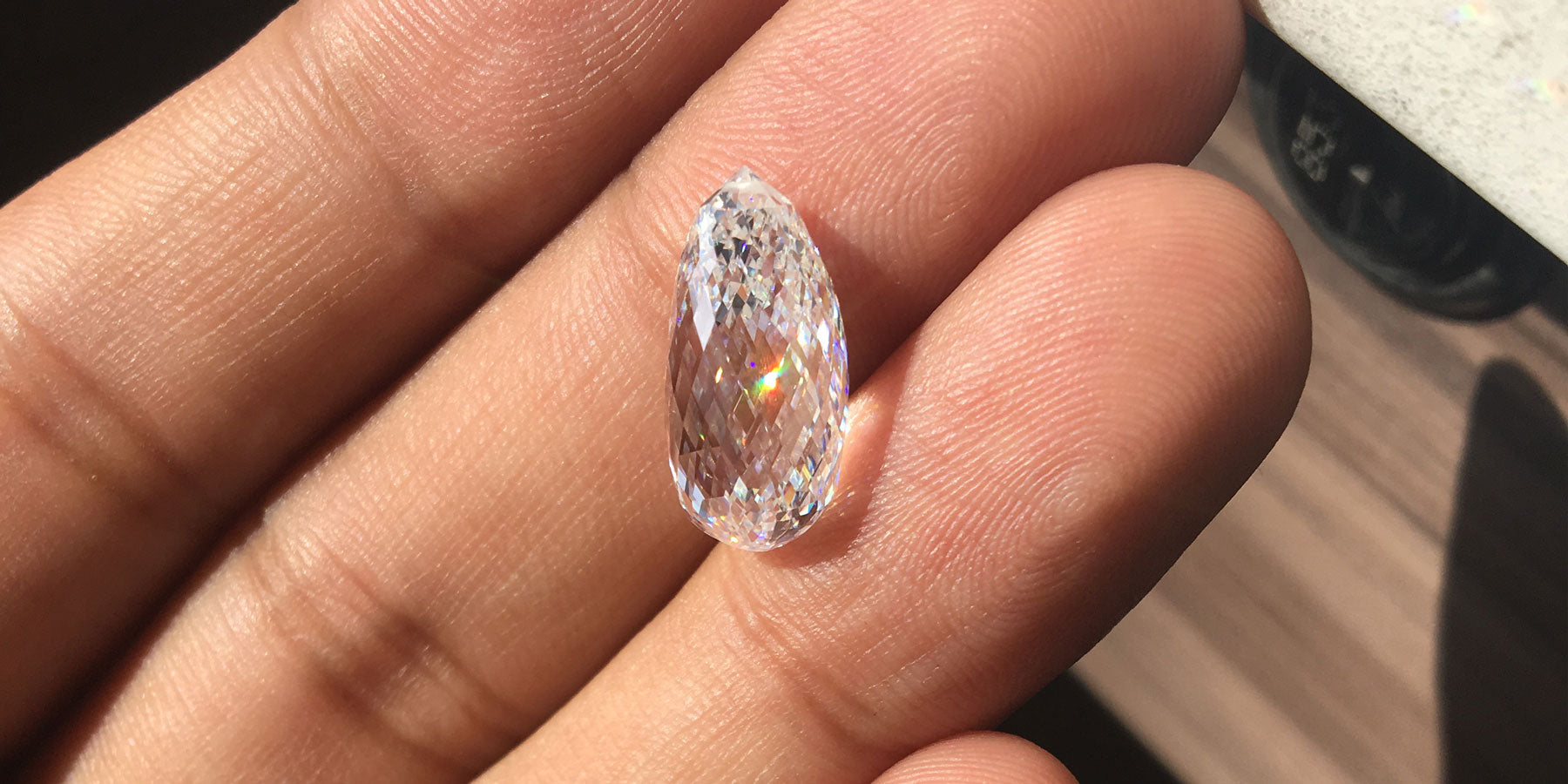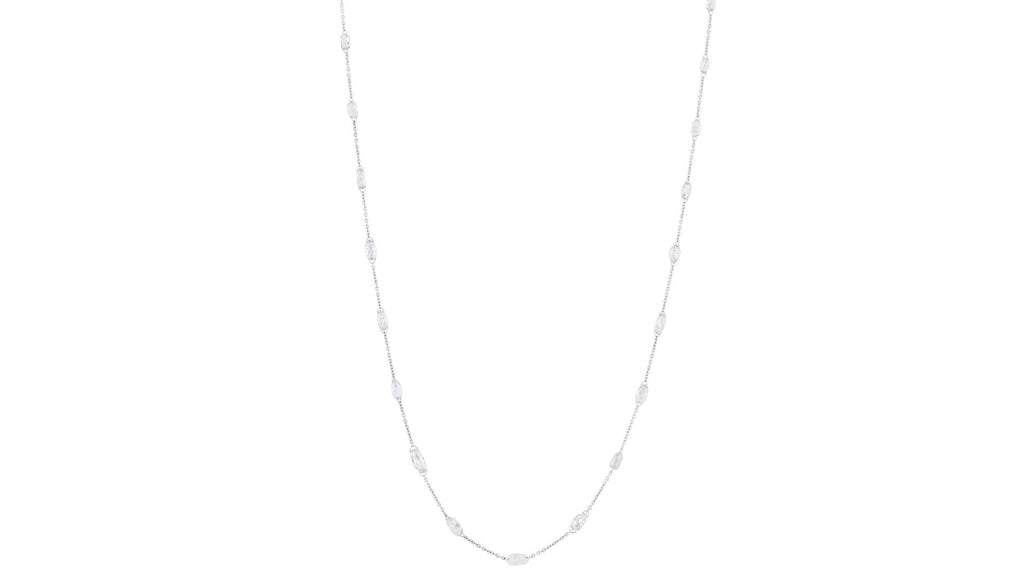Briolette Diamonds
The briolette cut is one of the most difficult cuts to master, and even modern laser cutting technologies struggle to create perfect briolette stones. But whilst they may be painstaking to produce, they certainly make for one of the most exquisite and unique diamond cuts available. The briolette cut’s distinctive teardrop shape offers unobstructed views of the diamond and enables a rare sense of fluidity that displays a diamond at its best.
Although some have suggested that the briolette originated from India over 800 years ago, there currently appears to be little evidence to support this claim. The Briolette Cut was invented in the late 15th century by the father of modern diamond cutting, the Flemish diamantaire, and scientist Louis Van Berquem. Famous for inventing one of the earliest polishing machinery, he revolutionized diamond cutting and introduced absolute symmetry into the art. However, it rose to its highest acclaim when Napoleon Bonaparte wooed his wife Empress Marie Louise with a necklace containing 10 briolette diamonds weighing over 40 carats in total. It then remained popular throughout the Victorian, Edwardian and Art Deco periods.

Portrait of Empress Marie Louise wearing her famous Briolette necklace. The original Briolette necklace was given by Napoleon to Marie Louise, now kept in the Smithsonian.
Its distinctive pear or tear-shape is created with the use of triangular or diamond facets that cover all angles of the diamond. Hence it has no table, crown, or pavilion and is not set using the same methods that other cuts of diamonds. When incorporated into diamond jewelry, a fine hole is commonly drilled into the diamond to support a wire thread and often covered with a metal cap. As a result of its characteristic shape, it can be suspended to create a gorgeous chandelier effect. Hence, the briolette is a characteristic cut for drop earrings and pendants.
64Facets Briolette Diamond Necklace
Due to the fact that briolette diamonds are not set rigidly into metal, they possess a freedom of movement that gives them a sense of drama as they catch and reflect light. This effect has been described as a ‘light show’ as light can reflect brilliantly into the diamond from any angle.
At 64Facets, we love to use our hand cut briolette diamonds as the sparkling finishing touch to our necklaces or incorporating them into our one-of-a-kind pieces – the Briolette adds the just right touch of theatricality to catch your eye.

A 64Facets loose 10-carat D grade Flawless briolette diamond.
Learn more about a delicate variant of briolette diamonds, the flat briolette.
Discover 64Facets selection of sustainable jewelry featuring theatrical briolette diamonds and flat briolettes.





